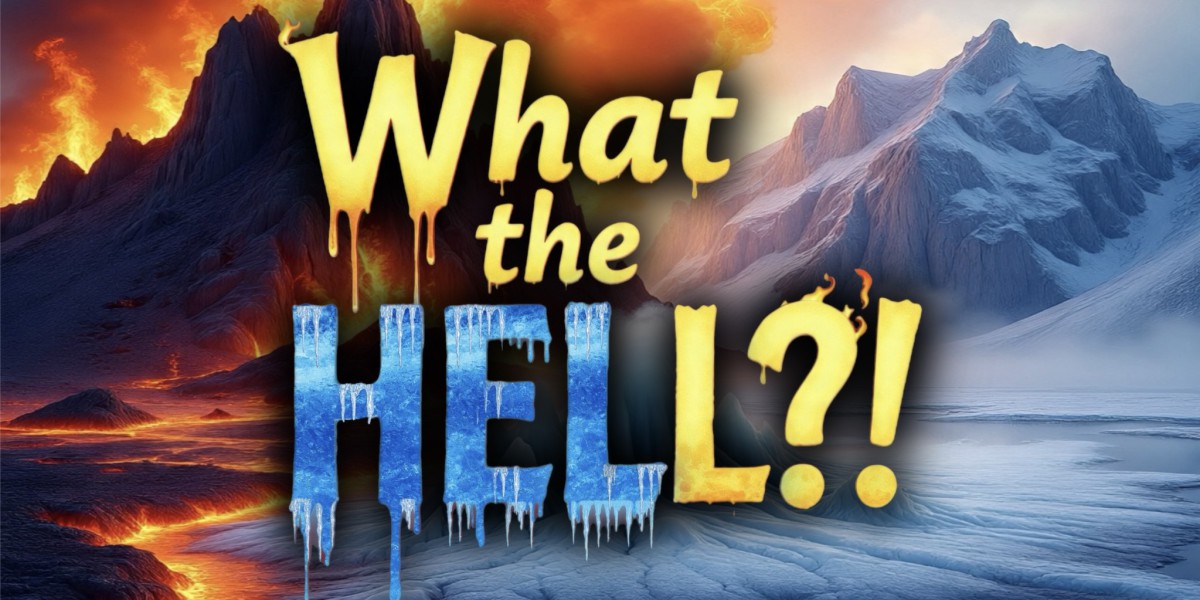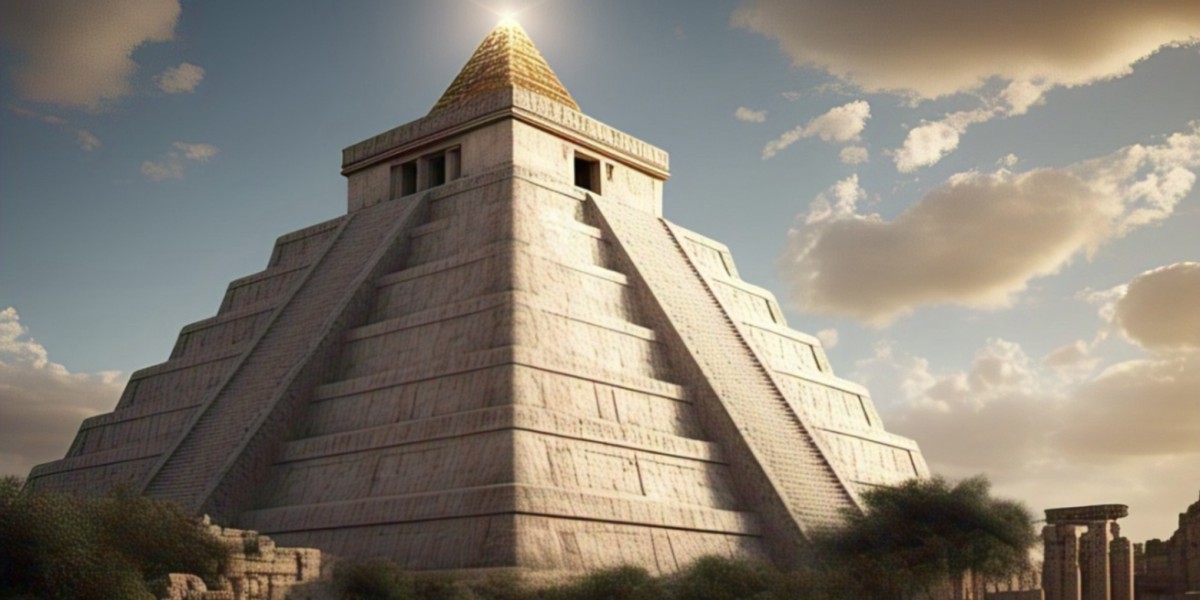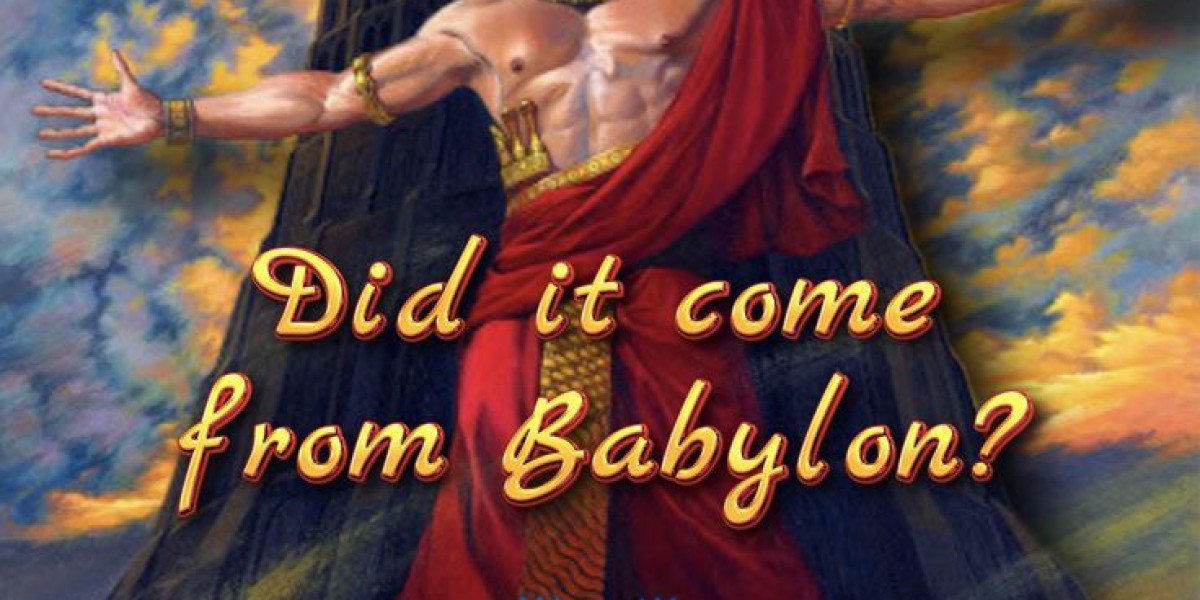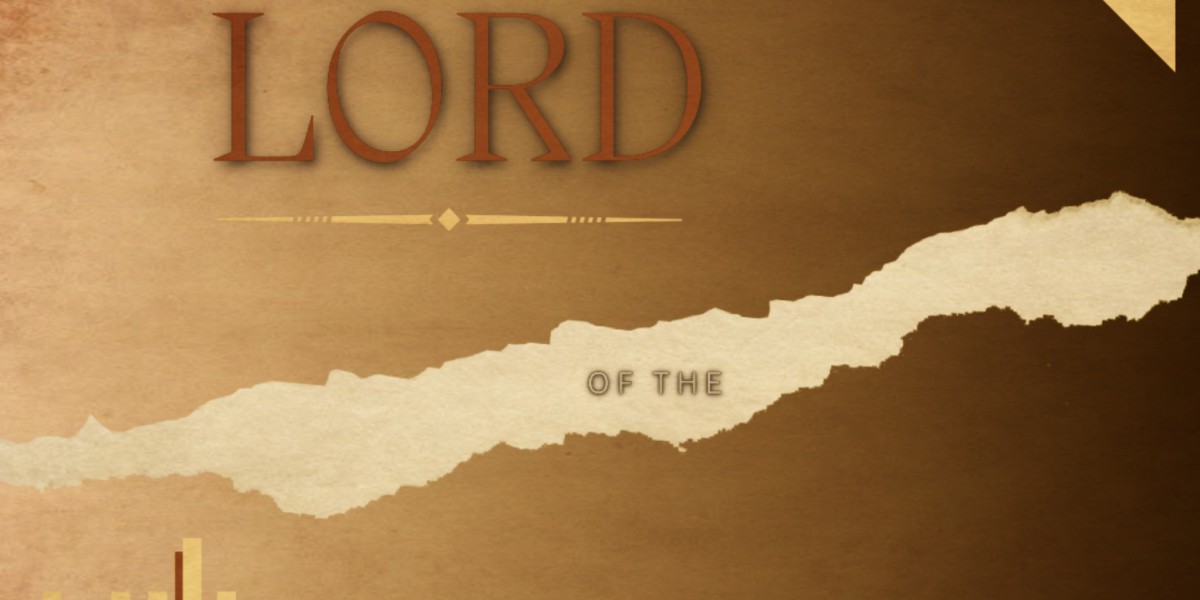Hell is biblical right? While most people would immediately say yes, believing even that such a place not only exists and that it is the aim of their life to avoid it, the simple fact is that Hell is not real. “Oh but I’ve read it right in the Bible! It’s definitely biblical!” Have you truly? Have you read the very words the disciples of Yeshua wrote themselves and the prophets before them?…Or have you read the words rendered by scribes in your language and claimed to be translations? Have you checked those translations? Have you followed the philology to find out if the scribes who handed you their version of the Bible were actually faithful?…Or did you simply follow blindly?
The word Hell which you will likely find in the English version of your Bible is directly related to the word Hel, the name of the fictional nether-realm and ruler thereof from Norse Mythology, both linguistically and conceptually, though the notion evolved over time to become more elaborate, more extreme, and more evil.
Essentially, Hell (English) and Hel (Old Norse) are the same word, just diverging along different Germanic branches. Each word derives from the same Proto-Germanic word “haljō.” That Proto-Germanic “haljō” likely descends from the Proto-Indo-European (PIE) root “ḱel”, meaning “to cover, conceal, or hide.” Think of how the dead are “hidden” or “covered” in the earth or how related words such as “cellar” and “helmet” are a hidden underground space or a protective covering for the head.
While both words come from the same root, among the Norse it took on a more specific meaning as both the realm of the dead and the goddess who rules it. In Norse mythology, Hel was both a place - the underworld where many of the dead went, but not all, especially those who did not die in battle - and a being - the goddess who ruled over it, Hel or Hela, daughter of the trickster, Loki. But the Old English “hell” was basically just a general Germanic underworld. It wasn’t necessarily a goddess or a place of punishment but simply where most of the dead went unless they were specially honorable people such as brave warriors or great kings.
In Anglo-Saxon/Christian England, Hell became the word used to “translate” the Biblical concepts of Sheol and Gehenna, shifting over time from meaning “the hidden place of the dead” to a place of torment in Christian theology. (Hell is typically also used to render the Greek “Hades” and “Tartarus” aswell.)
Sheol (Hebrew) – the grave / soul-sleep, neutral.
Hades (Greek) – underworld of the dead, also neutral.
Gehenna (Greek) – originally the Valley of Hinnom, later a Jewish metaphor for final fiery judgment.
Tartarus (Greek) – deepest pit of darkness, used once in the New Testament.
Since Old English already had “hell” for the “world of the dead,” it was seen as the “natural choice” to use for replacing all of these. Though “Hell” was a poor choice for any of these, it was a word chosen for English usage and later for the English Bible largely because it was already the familiar Saxon term for “the underworld,” not because it reflected the meaning of the Biblical language…and its meaning shifted subsequently because of Christian theology.
When the Anglo-Saxons became Christians around the 7th century and onward, missionaries and translators picked many existing English words for presumptive counterparts to Hebrew and Greek terms. Over time, as the Church took more and more power and control in England and spread to neighboring nations those terms moved with her progression taking on new notions and nuances not native to the words themselves until the end result was as unlike the originals as these were to the Hebrew and Greek they replaced. “Hell” itself was no exception either. Because Christian teaching emphasized judgment, the understanding of the English Hell narrowed from a place for “all the dead” to a place for only “the wicked dead.” And this differed greatly from previous Norse beliefs, where Hel came from, and where it as a location was still mostly neutral, just the general underworld.
Early English translations like Wycliffe’s in the 14th century and later Tyndale’s in the 16th used “hell” wherever the Latin Bible had infernus/infernum, which itself had broadened from “lower regions” to “eternal fire.” And so the familiar word was carried into a stricter Christian understanding, loading “hell” with new meaning and moving it from a general “hidden place of the dead” to a place of punishment reserved only for the wicked.
In Norse mythology, Hel or Hela (both the goddess and her realm of Hel or Helheim) was never regarded as a place of fire, but rather of cold, mist, and shadows, the destination of those who died of sickness, old age or cowardice, as opposed to the glorious dead destined for Valhalla or Fólkvangr. Hel in that mythos was more a neutral underworld than a punishment realm. In contrast, the Christian concept of Hell developed gradually in a merging and conflation of ideas from elsewhere.
When Christianity moved into Germanic lands, the Old English word “hell” was used not to truly translate all the biblical concepts and assumed counterparts of Sheol, Gehenna, Hades and Tartarus but to replace them. The Church shifted “hell” from “the underworld” into a place of punishment, because it was being used for Gehenna as well as Hades. That’s why in medieval English and beyond, “Hell” almost always implied fire and torment, even though its Germanic root word and old English functionality had no such imagery and its pre-Christian usage meant no such thing.
The common use of Hell as a general term for the afterlife of the damned does, infact, come from a mix of scribal traditions and cultural blending. In Old English, it didn’t inherently mean a place of fiery punishment, but when Christian missionaries translated the Bible into Germanic languages, they needed a word that to them encapsulated Sheol, Hades, Gehenna, and Tartarus. Since they had no one-to-one equivalents and were opposed doctrinally to simple transliteration, they often used “hell” for all of them lumping together very contradictory concepts.
By rendering all these with hel/hell, passed off as translations, the Christianized Anglo-Saxons and later Europeans absorbed a blended view. “Hell” became a place of the dead, a place of punishment, and eventually a fiery pit. This blending was further amplified in the Middle Ages by sermons, art, and plays where “Hell” was dramatized with flames, demons, and eternal torments on full display - imagery much closer to Zoroastrian fiery judgment than to the older Germanic Hel or even the old Saxon Hell.
The early Christian translators and later medieval preachers often didn’t know the nuances of Norse or Germanic mythology. Their frame of reference was Latin, especially Jerome’s Vulgate. In Latin, infernum (or inferi) simply referred to “the lower regions” or “the underworld,” but it also picked up the connotation of fiery torment because of how Gehenna was assumed to be and preached about, and that due predominantly to an influx of Zoroastrian converts to Christendom. So, when so-called scholars encountered Hel or Helheim in Germanic tradition, it would have seemed like the obvious “pagan equivalent” of the biblical infernum/inferno. The detail that Hel’s realm was a cold, shadowy place, more about dreariness and separation than fire, was completely lost on them, let alone the fact neither ideas came from the Bible but both were being superimposed upon it.
Meanwhile, Muspelheim in Norse mythos was the fiery realm, guarded by Surtr, King of the Eldjötnar (Firegiants) and destined to play a lead role in Ragnarök, the Norse notion of the end of the world. But that distinction wasn’t well understood in the Christian Latin West, so they effectively mapped Gehenna onto Sheol, adopted Hades as the Greek equivalent of Gehenna, then mapped Inferno onto Hades and adopted Helheim as the Germanic equivalent of Inferno while mapping Muspelheim onto Helheim yet keeping the terminology of Hel or hell… thereby importing fire imagery where it didn’t belong, almost as though Helheim was mistaken for Muspelheim ubiquitously.
Such conflation then hardened into the general European Christian use of “Hell” as a place of fire and torment, rather than its older sense of a neutral cold underworld. That alternative understanding then travelled the world over thereafter throughout the British Empire. Layers of interpolation, theology, imagination, and art were all built upon one another over a long period of time until “Hell” became the very detailed thing we see in soteriology, demonology, and eschatology today.
The Hebrew Bible only has Sheol - the grave, soul-sleep, vague afterlife. No fire, no demons, no details.
In the New Testament we are introduced to Gehenna without detail just like Sheol of old though serving as a separate conception. It is presumed to be a place of fire of judgment, symbolic of the burning Valley of Hinnom, though biblically we can know nothing for sure. And the Greek translation did the same adoption tradition by setting Hades as the counterpart of Sheol, (… and Tartarus as a lesser used term for and worse idea of Hell or a worse part of it. Biblical imagery is vivid but scattered - fire, darkness, worms, destruction, exclusion from the presence of Elohim but not a mapped-out underworld.
Early Christians living in a Mediterranean world steeped in Homer, Virgil, Plato with the stories of the Aeneid and Plato’s myths describing detailed underworld journeys, punishments, rivers, judges, and regions were perfectly happy projecting Hades into the Text of Scripture as their familiar idea of what awaited in the afterlife - first assumed equivalency in Christendom. Early converts from the Greco-Roman traditions brought their ideologies with them and their false equivalencies, and the new religion allowed their terms to be used therein.
What happens when we use the same terminology as other people who are referring to different things? Either they will adapt their terms to our understanding or we will adapt our understanding to their terms…Which is exactly what happened. The Greek deity of the underworld was set aside but his realm was preserved in mind and superimposed upon the biblical notions of Sheol and Gehenna. This gave Christianity a template eventually leading to the later adoption of the Anglo-Saxon concept of hell. Hell became not just a fate, but a landscape.
Books like 1 Enoch, 4 Ezra, and the Dead Sea Scrolls describe fiery pits, angels of punishment, and divided fates for the righteous and wicked. This apocalyptic imagination heavily shaped the New Testament’s “outer darkness” and “lake of fire” motifs. But it wasn’t until Augustine in about the 4th and 5th when the idea of eternal torment for the wicked was systematized, largely interpolated from Matthew 25’s references to “eternal fire, prepared for the devil and his angels”. Later, Gregory the Great and others linked this idea with Hell in pastoral teaching, using vivid descriptions to warn sinners. By the 6th–10th centuries, Hell was tied into eschatology itself with the Last Judgment, the resurrection, and the final destiny of all evil souls.
Dante’s Inferno in the early 14th century gave Hell a geography not seen before, with nine circles or levels, each for different sins, with specific demons, torments, and reasons. Though this picture was never established as “official doctrine,” in Christendom, it didn’t matter. It nevertheless became so influential that people assumed it was theology which made it so in practicality, which is where future doctrine develops.
Mystery plays, sermons, and art such as the works of Hieronymus Bosch, expanded on this depiction, giving Hell grotesque details - devils with pitchforks, boiling cauldrons, torture chambers, etc. Medieval scholars and inquisitors categorized demons, often tying them to the seven deadly sins. Manuals like the 15th century Malleus Maleficarum (Witches’ Hammer) connected demonology, witchcraft, and Hell in a tightly interwoven system. Hell thus became the kingdom of Satan, staffed with a bureaucracy of demons, tempting humans on earth and torturing them later below.
In theology, Hell came to represent the inverse of creation. This symbolism drew from biblical language (“outer darkness,” “second death,” “lake of fire” etc.) but also from cultural fears of wastelands, plagues, and infertility. Hell, as we’ve come to know it, began as a vague pagan underworld, Hel or Hell, an assumed equivalency of Sheol, the biblical nondescript condition or location of all the dead. It borrowed a structure from GrecoRoman underworld motifs, morphed with the firerealm of the Muspels, picked up fiery-judgment aspects from Zoroastrian influence, was systematized by Augustine, visualized by Dante and medieval artwork, and then filled with a demonic hierarchy by theologians and inquisitors. Over time, it became the highly detailed realm of torment, demons, and sterility we know from theological disciplines in our time.
Arguably, mystery plays had perhaps the greatest impact on perpetuating the perversion of Hell upon the ignorant populous. These were religious dramas performed predominantly in European towns from the 10th to 16th centuries, usually around feast days like Corpus Christi. They dramatized Bible stories mostly such as the Creation, the Fall, the Crucifixion, the Last Judgment etc… and Hell was a favorite crowd-pleaser. A huge stage prop referred to as the Hellmouth, often shaped like a monstrous dragon maw or similar beast’s gaping jaws, was built to represent the entrance to Hell. Smoke, fire, and pyrotechnics (torches, fireworks, gunpowder etc.) and actors dressed as demons dragging sinners screaming into it, made it terrifying and spectacular for the average spectator. This all gave ordinary townsfolk a visual, sensory experience of Hell, not abstract theology, but roaring flames, sulfur smells, and grotesque demons. The plays taught theology through fear and awe, and overtime, people remembered the drama more than the Scripture. “Hell” was no longer a shadowy undefined afterlife for all, heathen or holy; it was a fiery pit full of devils and darkness waiting to swallow the wicked who didn’t repent and obey the Church.
Hieronymus Bosch (c. 1450–1516) was a Dutch painter whose works gave Hell some of its most lasting imagery, found in paintings like “The Garden of Earthly Delights”, “The Last Judgment”, and “The Haywain.”…With his depictions of nightmarish landscapes of fire and darkness with swarms of grotesque demons, each hybrids of animals, insects, and humans, strange torture device and musical instruments, and machinery used as tools of torment creating a sense of chaos, sterility, and inversion, everything being twisted against the natural order, Bosch may not have been trying to write theological doctrine, but his imaginative portrayals stuck the collective memory.
His surreal, almost hallucinatory Hell became a visual template later copied by woodcuts, printed Bibles, and popular art. By the 16th century, people “knew” what Hell looked like…because they had seen Bosch or something derived from him. Mystery plays made Hell real with theatrical fire, demons, and a giant maw, and Bosch made Hell visual grotesque, detailed, unforgettable. Together, these phenomena cemented the medieval idea of Hell as a place not just of fire, but of grotesque torment, demonic activity, and anti-creation. And when Protestants later tried to strip away “Catholic excess,” much of this imagery was already ingrained in Christian culture to the point of being unquestionable, so it endured in folk religion, literature, and even into modern horror.
One of the giants in shaping the Protestant imagination of Hell, just as Dante was for the Catholic, was John Milton. In his 17th century publication “Paradise Lost,” Milton described Hell as a vast, burning wasteland - “a dungeon horrible, on all sides round / As one great furnace flamed, yet from those flames / No light, but rather darkness visible.” This phrase, “darkness visible” gave Hell a paradoxical quality: fire without light, torment without end, existence without life. It wasn’t just Dante’s layered pit exactly, but still a cosmic prison, cut off from Heaven, yet still vast and terrifying.
Milton made Satan a most compelling character - proud, defiant, and even tragic. His famous line, “Better to reign in Hell, than serve in Heaven”, reframed Hell as not only a punishment but also a realm of false freedom and counterfeit dominion, giving rise to centuries of related literature, art, and philosophy where Hell was the backdrop for rebellion, ambition, and tragic heroism. Where Dante gave Hell depth and detail, Milton gave Hell politics and economy. Devils like Moloch, Belial, Mammon, and Beelzebub were characterized with distinct personalities and philosophies in a council of fallen angels debating strategy, complete with rhetoric, factions, and arguments. This turned Hell into an alternate kingdom or opposing-empire, an organized rival to Heaven, not just random, unruly chaos and darkness. And later demonologies leaned heavily on Milton’s cast of devils, filling out the “bureaucracy of Hell.”
Writing within Reformed Protestant theology, Milton’s Hell was not just punishment but also eschatological separation, a place made worse by the loss of the presence of Providence. He helped reframe Hell as self-chosen exile as much as divine judgment, a theme later reflected in writings like C.S. Lewis’ “The Screwtape Letters” and “The Great Divorce”. Just as Dante shaped the medieval Catholic vision of Hell, Milton shaped the early modern English-speaking imagination.
Painters, poets, and preachers have since borrowed Milton’s images: “darkness visible,” fiery plains, Satanic councils, and more. Romantic poets such as Blake, Shelley, and Byron especially loved Milton’s “Satan” as a symbol of defiance. His work also fed into Puritan sermons, colonial homiletics, and later revivalist fire-and-brimstone preaching, making Hell vivid, not abstract.
Dante gave us the map of Hell.
Bosch gave us the images.
Milton gave us the voice.
Milton gave the idea of Hell its poetry, its psychology, and its soul.
That combination is why Hell, in the Western imagination, feels so detailed, vivid, and populated, when it is entirely a work of complete fiction start to finish.
Hell, as you know it, as you have heard about it and been trained to think of it when you read the word as rendered in your English Bible versions, is a fantasy from first to last. Hell as you have been taught to fear it is a Christian creation of pure imagination, a false conflation of the ideas of the ages, an amalgamation of old philosophy, popular folklore, and modern art. It is the retched result of nearly 2000 years of evolutionary storytelling, playacting, painting, book writing and generational superstition, all with no more truth than Mother Goose.
Is there then no justice for wickedness? No punishment of perversions? No eternal penalty to be exacted for sins committed on earth? To be sure there certainly is…but such judgment to come, according to the Bible as written and not as interpreted by modern churchianity or medieval artists, painters, and playwrights, such cosmic comeuppance is to be doled out on the Last Great Day when the world and all we’ve ever known is rolled up like a scroll and the dead of all the ages are called to life again to answer for every act good and evil, known and unknown…not before, not in the GrecoRoman, Norse, or Christian underworld, not in hellfire for all eternity, and not in any manner as yet imagined by man.
The Bible tells us we die, and go to Sheol. What’s Sheol? Nobody knows. It’s described only as the “place of the dead” or simply as “the grave”. And as our Master, the King Messiah, Yeshua spoke about it and after Him all His emissaries and disciples also, it is a state of some kind of sleep. Is it the sort that feels like forever? The manner which makes one have nightmares? Sleep without dreams? Sleep which makes one toss and turn or move about somnambulantly?…Nobody knows.
Nobody knows because nobody who has known has said…which means we don’t need to know.
We are given this life only (as far as we know), and we are only told it ends in Sheol…and thereafter the judgement - with the wicked going away to undefined punishment and the righteous entering in to eternal life also indestructible and so left undescribed. Scripture shows us what to do to be in the category counted righteous on that Last Great Day. We are instructed to keep the commandments, the commandments of YHWH, our Heavenly Father, not those of Church councils or denominational tradition. And when we fail (and we will) we are to plead the blood of our Savior, Yeshua, over our souls. We are called to strive valiantly in The Way of the Master, doing as He said and doing as He did, and offering similar mercy and forgiveness for the wrongs done unto us in this life, knowing as He Who is our future Judge has already said, that if we forgive others their trespasses against us, that His Heavenly Father (and ours aswell if we are truly His) will forgive us our trespasses against Him on that Final Day.
We aren’t supposed to be doing rightly to escape Hellfire or avoid a terrible fate in a frozen Helheim or dreary Hades. We can’t save ourselves, and Hel(l) is not real anyway. On the contrary we are supposed to be trying to be doing what is pleasing to our Father which is mimicking His ‘Son’s’ behavior. And failing, to fall in faith at His holy feet and plead the blood He shed for our salvation.
We aren’t meant to be attempting escape from eternal flame, and we don’t know what the punishment will be exactly for us if we refuse to obey and refuse His grace. We are only told in Scripture that if we are judged evil that we will be excluded, kept outside the New Jerusalem, left out of the Life of the World to come, that we must go away into eternal punishment, and that there will be weeping and gnashing of teeth in a place or state of being He calls Gehenna.
What is that place or state of being? Where is it? What is it like?…we can not say…because He did not say.
And if He did not say, then we dare not declare.
The one thing we definitely do know however is that Hell is not real. It is not the destination of the damned. It is not a biblical concept or term. It is not original to the people of The Way, and its modern Christian connotation is not native to the pagan people the word came from either. Hell as modern Christian theology teaches it is a mashup of many foreign ideas, made over the ages from various myths and fantasies, fears and misplaced faiths, morphed from a cold dark shadow world of heathen hopelessness into the fiery kingdom of darkness ruled by the devil where evil people are dragged down to demonic torture forever and ever. Every aspect of Hell is a work of fiction and need not be feared.
The Doctrine of Hell is almost as dear to Christianity (and many in the Messy-anic Movement) as that of Heaven itself, and many fanciful descriptions of this place of perdition have been written, yet the simple fact is that Hell is a work of fiction and not a biblical belief at all...
Second Guess First Assumptions
Question Everything
Get Biblical






